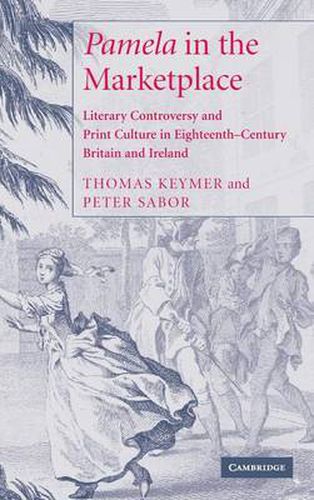Readings Newsletter
Become a Readings Member to make your shopping experience even easier.
Sign in or sign up for free!
You’re not far away from qualifying for FREE standard shipping within Australia
You’ve qualified for FREE standard shipping within Australia
The cart is loading…






Samuel Richardson’s Pamela (1740) is often regarded as the first true novel in English and a landmark in literary history. The best selling novel of its time, it provoked a swarm of responses: panegyrics and critiques, parodies and burlesques, piracies and sequels, comedies and operas. The controversy it inspired has become a standard point of reference in studies of the rise of the novel, the history of the book and the emergence of consumer culture. In the first book-length study of the Pamela controversy since 1960, Thomas Keymer and Peter Sabor offer a fresh and definitive account of the novel’s enormous cultural impact. Above all, they read the controversy as a market phenomenon, in which the writers and publishers involved were competing not only in struggles of interpretation and meaning but also in the larger and more pressing enterprise of selling print.
$9.00 standard shipping within Australia
FREE standard shipping within Australia for orders over $100.00
Express & International shipping calculated at checkout
Samuel Richardson’s Pamela (1740) is often regarded as the first true novel in English and a landmark in literary history. The best selling novel of its time, it provoked a swarm of responses: panegyrics and critiques, parodies and burlesques, piracies and sequels, comedies and operas. The controversy it inspired has become a standard point of reference in studies of the rise of the novel, the history of the book and the emergence of consumer culture. In the first book-length study of the Pamela controversy since 1960, Thomas Keymer and Peter Sabor offer a fresh and definitive account of the novel’s enormous cultural impact. Above all, they read the controversy as a market phenomenon, in which the writers and publishers involved were competing not only in struggles of interpretation and meaning but also in the larger and more pressing enterprise of selling print.